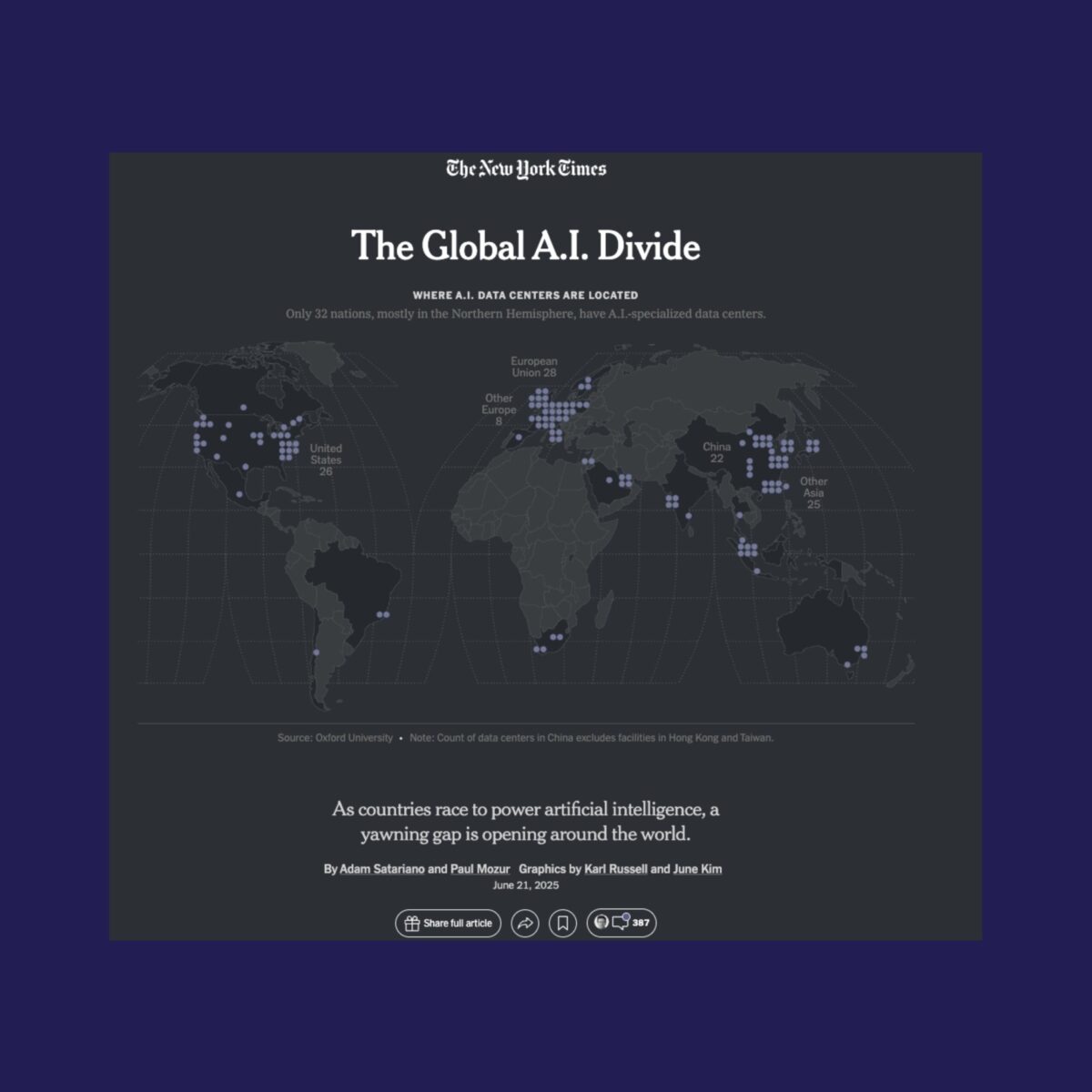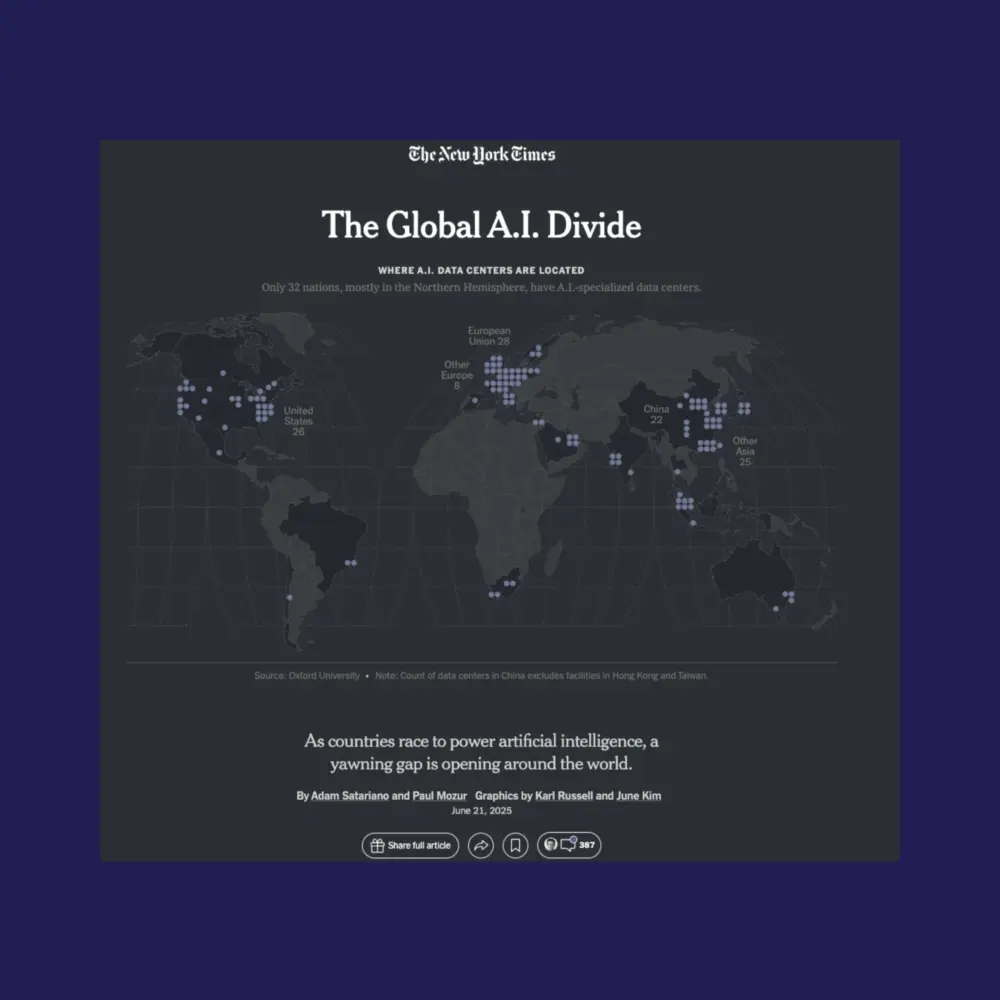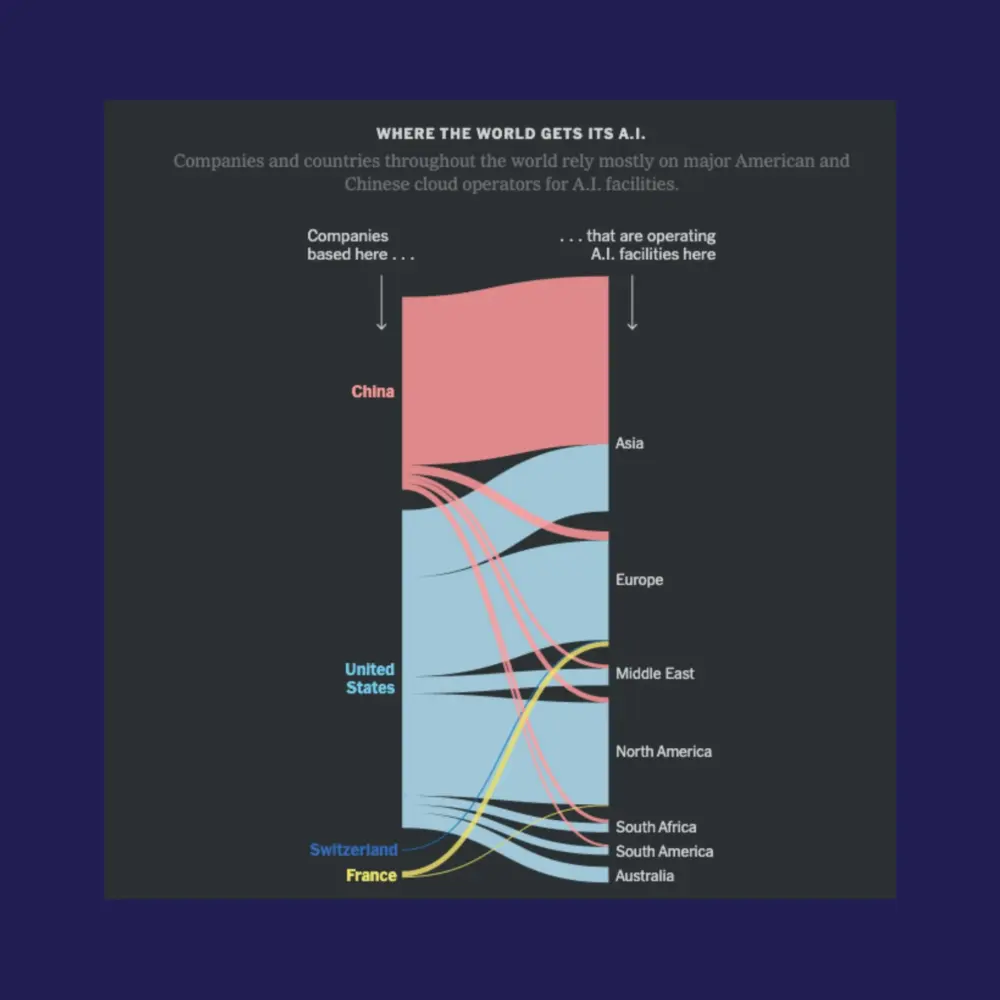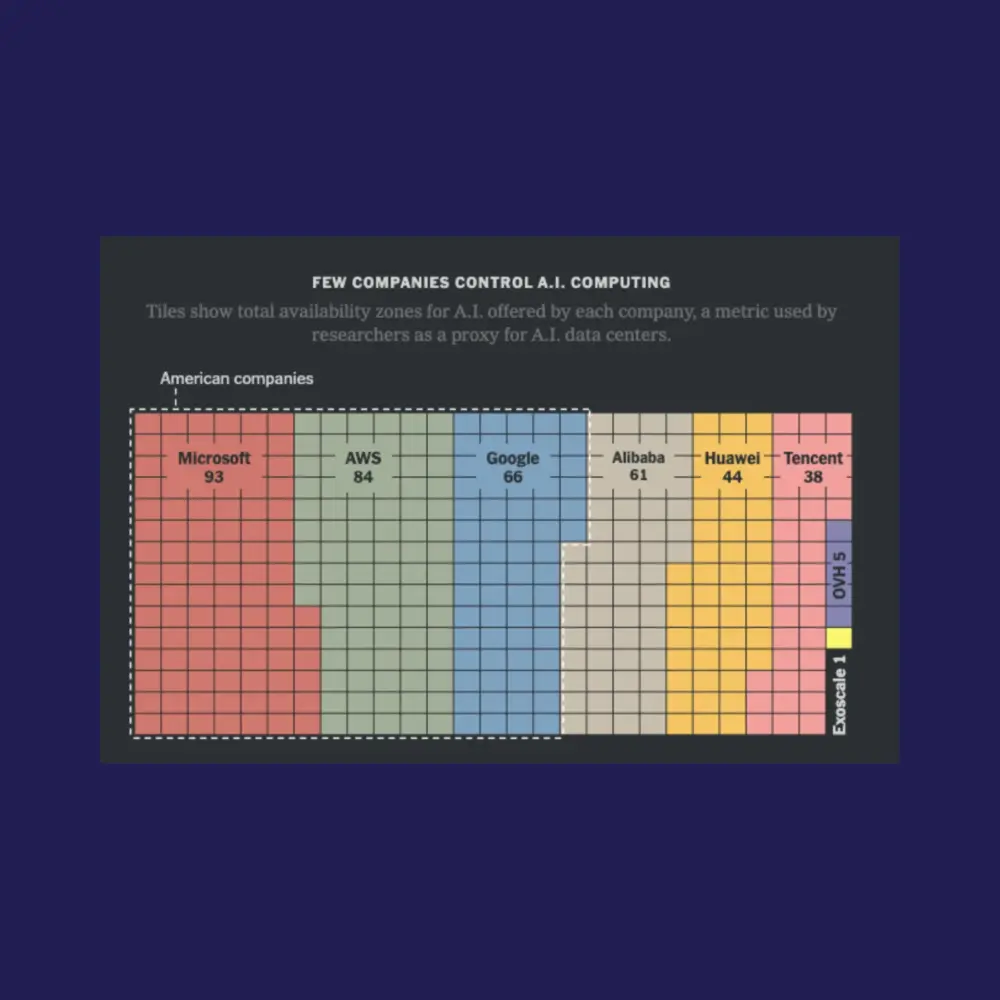TPDi research in The New York Times
𝗖𝗼𝗺𝗽𝘂𝘁𝗲 𝘀𝗼𝘃𝗲𝗿𝗲𝗶𝗴𝗻𝘁𝘆 is a loaded term, but an increasingly popular one. So what is it, who has it, and do you even want it?
TPDi Deputy Director Zoe Jay Hawkins and colleagues Vili Lehdonvirta and Bóxī Wú (Oxford Internet Institute, University of Oxford & Aalto University) have released new research answering these questions, which has been covered in the New York Times.

𝗖𝗼𝗺𝗽𝘂𝘁𝗲 𝘀𝗼𝘃𝗲𝗿𝗲𝗶𝗴𝗻𝘁𝘆 is a loaded term, but an increasingly popular one. So what is it, who has it, and do you even want it?
TPDi Deputy Director Zoe Jay Hawkins and colleagues Vili Lehdonvirta and Bóxī Wú (Oxford Internet Institute, University of Oxford & Aalto University) have released new research answering these questions, which has been covered in the New York Times this week.
Their paper offers a 3 level definition of compute sovereignty:
1️⃣ 𝗧𝗲𝗿𝗿𝗶𝘁𝗼𝗿𝗶𝗮𝗹: location of AI compute within a country’s borders
2️⃣ 𝗖𝗹𝗼𝘂𝗱 𝗼𝘄𝗻𝗲𝗿𝘀𝗵𝗶𝗽: nationality of companies controlling data centres
3️⃣ 𝗔𝗰𝗰𝗲𝗹𝗲𝗿𝗮𝘁𝗼𝗿 𝘃𝗲𝗻𝗱𝗼𝗿: nationality of companies providing chips that power the data centres
With a unique global dataset covering the footprints of 9 major US, Chinese, and European hyperscalers (225 cloud regions across 43 countries), the research reveals sharp differences in who controls what – and why that matters for tech policy. It points to critical trade-offs between resilience, foreign dependence, economic benefits, and local environmental impact.
As policymakers jostle for ‘compute sovereignty’, 𝘄𝗲 𝗻𝗲𝗲𝗱 𝘁𝗼 𝗮𝘀𝗸 𝗳𝗼𝗿 𝗺𝗼𝗿𝗲 𝗻𝘂𝗮𝗻𝗰𝗲: 𝘄𝗵𝗶𝗰𝗵 𝗸𝗶𝗻𝗱 𝗼𝗳 𝗰𝗼𝗺𝗽𝘂𝘁𝗲 𝘀𝗼𝘃𝗲𝗿𝗲𝗶𝗴𝗻𝘁𝘆, 𝗮𝗻𝗱 𝗮𝘁 𝘄𝗵𝗮𝘁 𝗰𝗼𝘀𝘁?
⬇️ Read the article in the New York Times
⬇️ Read the research paper: Hawkins, ZJ., Lehdonvirta, V., and Wu, B. (2025). AI Compute Sovereignty: Infrastructure Control Across Territories, Cloud Providers, and Accelerators.
⬇️ Read the research paper:Lehdonvirta, V., Wú, B., & Hawkins, ZJ. (2024). Compute North vs. Compute South: The Uneven Possibilities of Compute-based AI Governance Around the Globe



